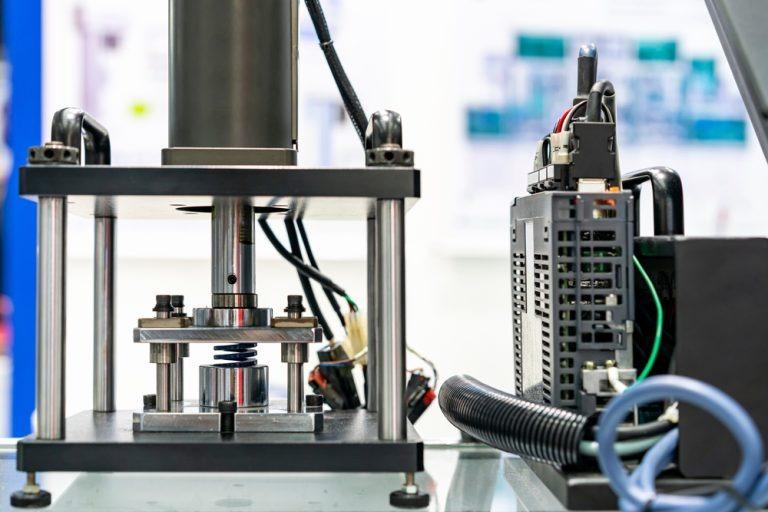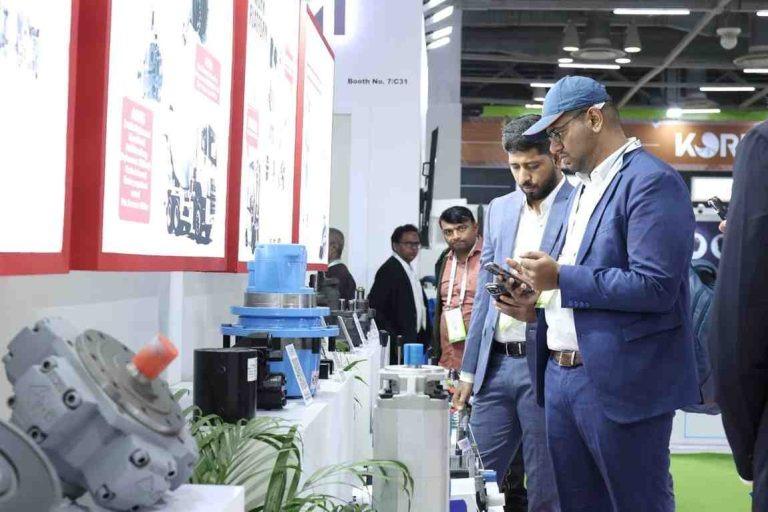Maximizing Efficiency in Hydraulic Systems: Internal Gear Pumps, Proportional Valves, and Small Hydraulic Motors

Hydraulic systems are at the core of modern industrial and mobile applications, from construction machinery and agricultural equipment to factory automation. Optimizing these systems requires components that are not only reliable but also highly efficient and responsive. Three components play a critical role in this optimization: internal gear pumps, load sensing proportional valves, and small hydraulic motors.

Understanding how these components work together is key to designing hydraulic systems that deliver precision, performance, and long-term durability.
1. Internal Gear Pumps: The Heart of Hydraulic Systems
An internal gear pump is a type of positive displacement pump widely used in industrial and mobile hydraulic applications. Its primary function is to convert mechanical energy from a motor into hydraulic energy by moving fluid through a series of gears.
1.1 How Internal Gear Pumps Work
Internal gear pumps consist of two gears: a driving gear and an idler gear enclosed in a crescent-shaped housing. Fluid enters the pump through an inlet port, gets trapped in the pockets between the gears, and is carried around to the outlet port where it is forced out under pressure.
This design allows internal gear pumps to deliver smooth flow, low pulsation, and high volumetric efficiency, making them ideal for sensitive hydraulic circuits.
1.2 Advantages of Internal Gear Pumps
-
Compact Design: Fits into tight installations without sacrificing output.
-
Quiet Operation: Ideal for indoor or mobile equipment where noise is a concern.
-
High Efficiency: Delivers consistent flow at low speeds and pressures.
-
Durability: Handles a wide range of hydraulic fluids, including those with low lubricity.
-
Versatility: Can be paired with various motors and valves for customized hydraulic solutions.
Internal gear pumps form the backbone of hydraulic systems, providing a reliable source of pressurized fluid for cylinders, motors, and control valves.
2. Load Sensing Proportional Valves: Precision in Action
While pumps generate flow, valves control it. Among these, the load sensing proportional valve is a key component for modern hydraulic systems that require precision and efficiency.
2.1 What Is a Load Sensing Proportional Valve?
A load sensing proportional valve adjusts the hydraulic flow and pressure to match the load demand in real-time. It senses the pressure required by the actuator (e.g., cylinder or motor) and proportionally regulates the fluid supplied, ensuring optimal performance without wasting energy.
2.2 Key Benefits
-
Energy Efficiency: Reduces wasted power by supplying only the required flow.
-
Smooth Operation: Prevents sudden jerks in cylinders or motors by modulating pressure.
-
System Protection: Maintains safe operating pressures, preventing damage to pumps or actuators.
-
Precision Control: Ideal for applications requiring controlled movement, such as robotic arms or mobile lifting platforms.
2.3 Applications in Mobile and Industrial Equipment
-
Excavators and loaders benefit from precise boom control.
-
Agricultural machinery uses load sensing for better fuel efficiency.
-
Factory automation relies on smooth actuator motion for quality assurance.
By combining load sensing proportional valves with internal gear pumps, hydraulic systems can achieve a perfect balance of power and control, enhancing both efficiency and operational safety.
Read More: Choosing the Right Pump: When and Why to Use a Gear Pump
3. Small Hydraulic Motors: Compact Powerhouses
When it comes to converting hydraulic energy into mechanical motion, small hydraulic motors are indispensable. Despite their compact size, they deliver high torque and precision, making them perfect for space-constrained applications or light-duty mobile equipment.
3.1 How Small Hydraulic Motors Work
Small hydraulic motors function similarly to larger motors, converting pressurized hydraulic fluid into rotary motion. Common types include gear motors, vane motors, and piston motors, each offering unique advantages in terms of torque, speed, and efficiency.
3.2 Advantages of Small Hydraulic Motors
-
Compact Design: Ideal for applications with limited installation space.
-
High Torque Output: Efficiently handles load demands relative to their size.
-
Precision Control: Can be paired with proportional valves for exact motion.
-
Durability: Engineered to withstand harsh environments in mobile or industrial operations.
3.3 Applications
-
Robotic arms and automated machinery for precision motion.
-
Agricultural equipment for steering, augers, and conveyors.
-
Mobile machinery requiring compact yet powerful drive solutions.
By integrating small hydraulic motors with internal gear pumps and proportional valves, engineers can design hydraulic systems that are efficient, responsive, and adaptable.
4. How These Components Work Together
The true potential of a hydraulic system is realized when internal gear pumps, load sensing proportional valves, and small hydraulic motors are integrated seamlessly.
-
Internal Gear Pump: Generates smooth, reliable hydraulic flow.
-
Load Sensing Proportional Valve: Adjusts flow and pressure based on real-time load demands.
-
Small Hydraulic Motor: Converts hydraulic energy into controlled mechanical motion.
This combination ensures that energy is used efficiently, motion is precise, and components operate within safe limits, reducing wear and maintenance needs.
4.1 Real-World Example
Consider a compact hydraulic crane:
-
The internal gear pump supplies fluid to both the lift and rotation circuits.
-
Load sensing proportional valves modulate flow to prevent jerky or uneven movements.
-
Small hydraulic motors drive winches or rotation mechanisms, providing precise, responsive motion.
The result is a system that maximizes performance while minimizing energy consumption and component stress.
Read More: Why Industries Rely on Proportional Valves for Flexible Operations
5. Maintenance and Performance Tips
To keep your hydraulic systems performing optimally:
-
Monitor fluid quality: Contaminated fluid can damage pumps, valves, and motors.
-
Inspect valves and sensors regularly: Ensure proportional valves and linear position sensors are functioning correctly.
-
Lubricate and check motors: Prevent premature wear in small hydraulic motors.
-
Schedule preventive maintenance: Early detection of leaks or wear reduces downtime.
-
Use OEM components: High-quality pumps, valves, and motors extend system life.
Proper maintenance ensures your hydraulic system remains efficient, reliable, and safe over the long term.
6. The Future of Hydraulic Systems
The next generation of hydraulic systems emphasizes smart integration and energy efficiency. Advances include:
-
IoT-enabled sensors for predictive maintenance.
-
Servo-assisted motors and valves for precise load handling.
-
Modular hydraulic components for rapid system adaptation.
By adopting these technologies, mobile and industrial equipment becomes smarter, safer, and more cost-effective, aligning with Industry 4.0 trends.
Conclusion
Hydraulic systems for mobile and industrial equipment rely on the synergy between internal gear pumps, load sensing proportional valves, and small hydraulic motors. Each component plays a critical role: pumps provide fluid power, valves regulate flow and pressure, and motors convert energy into motion.
Integrating these technologies not only enhances system efficiency and precision but also reduces energy consumption, wear, and maintenance costs. For businesses looking to upgrade or maintain their hydraulic systems, investing in high-quality components and professional maintenance ensures long-term reliability and performance.
- Art
- Causes
- Crafts
- Dance
- Drinks
- Film
- Fitness
- Food
- الألعاب
- Gardening
- Health
- الرئيسية
- Literature
- Music
- Networking
- أخرى
- Party
- Religion
- Shopping
- Sports
- Theater
- Wellness


